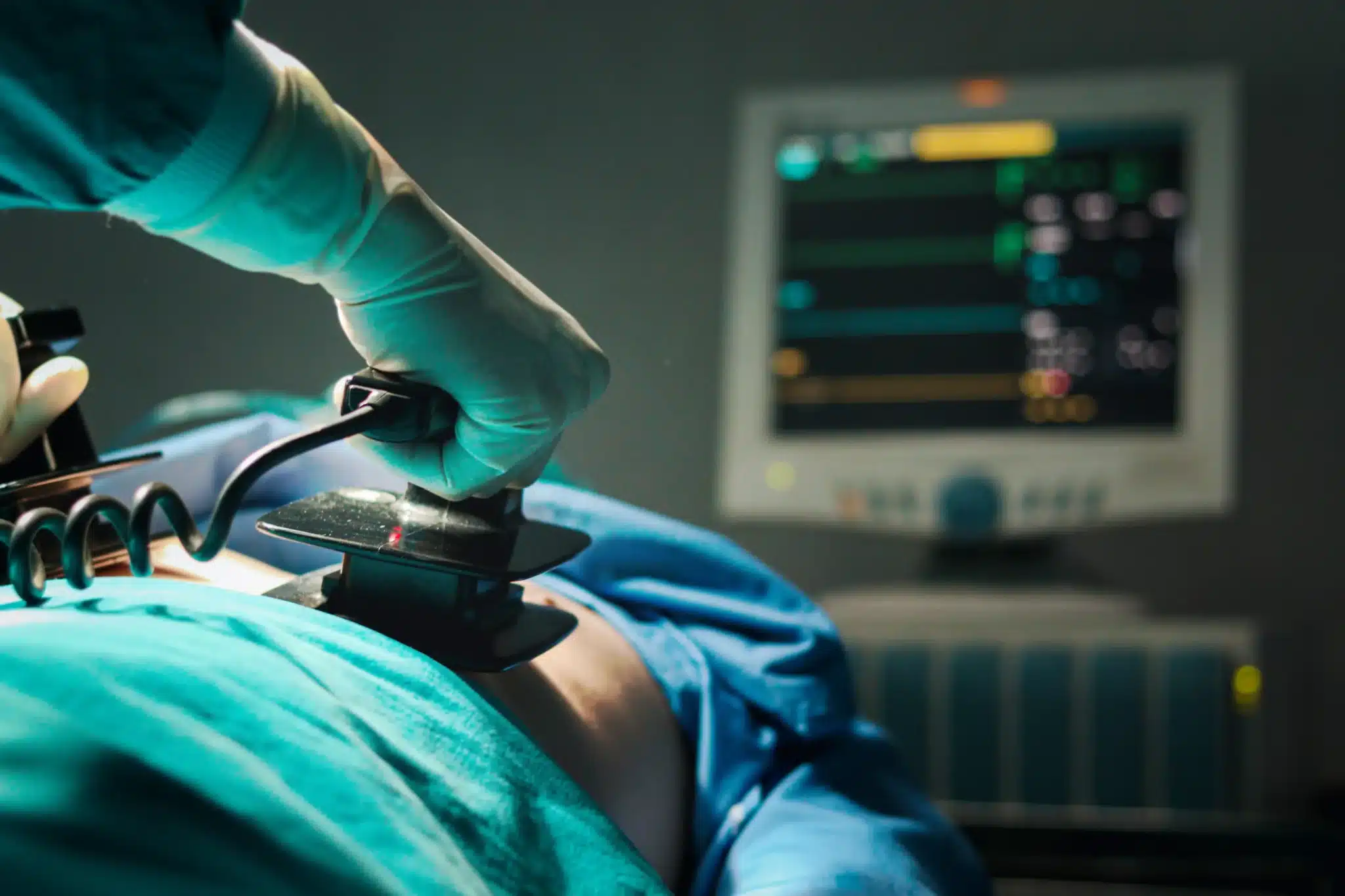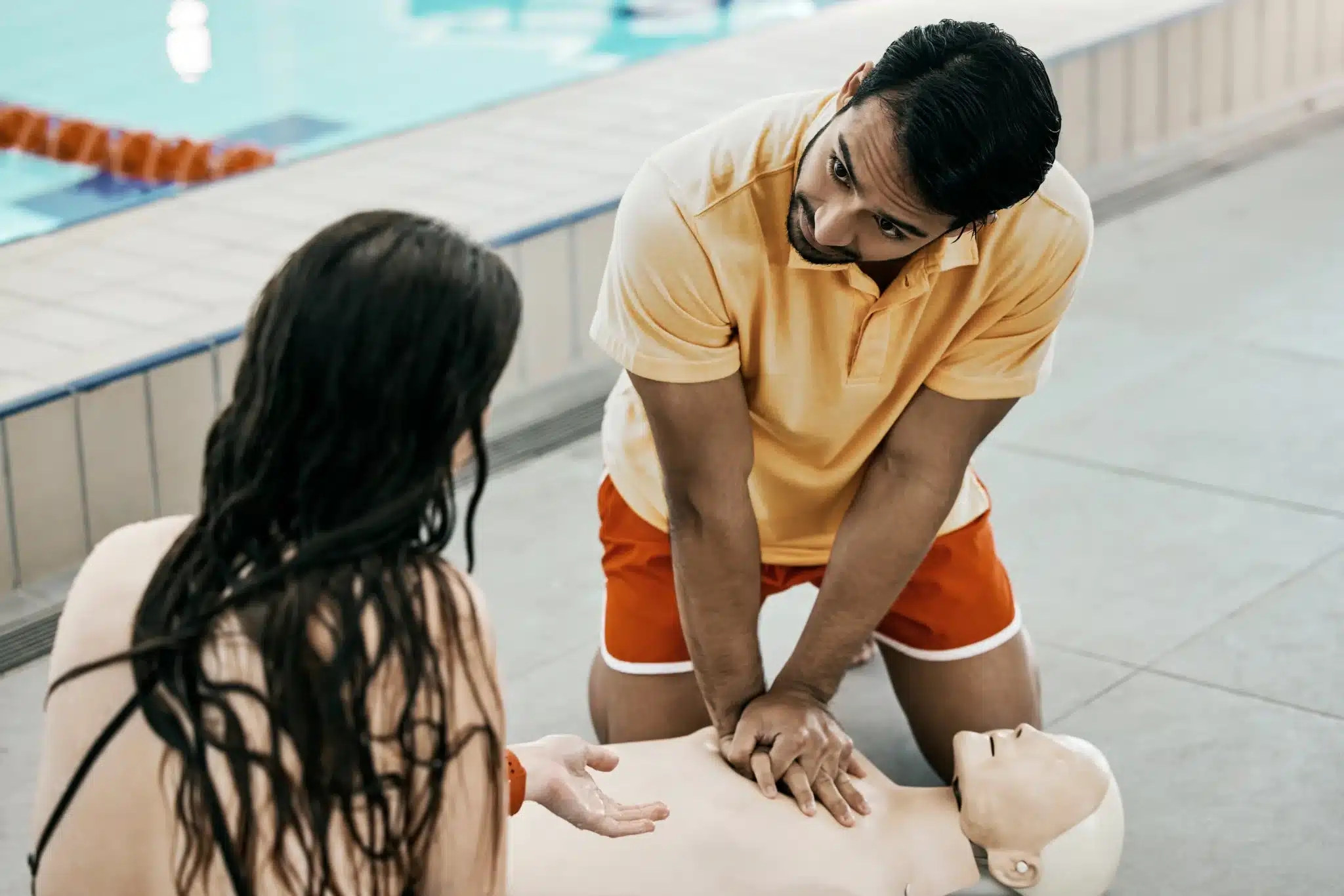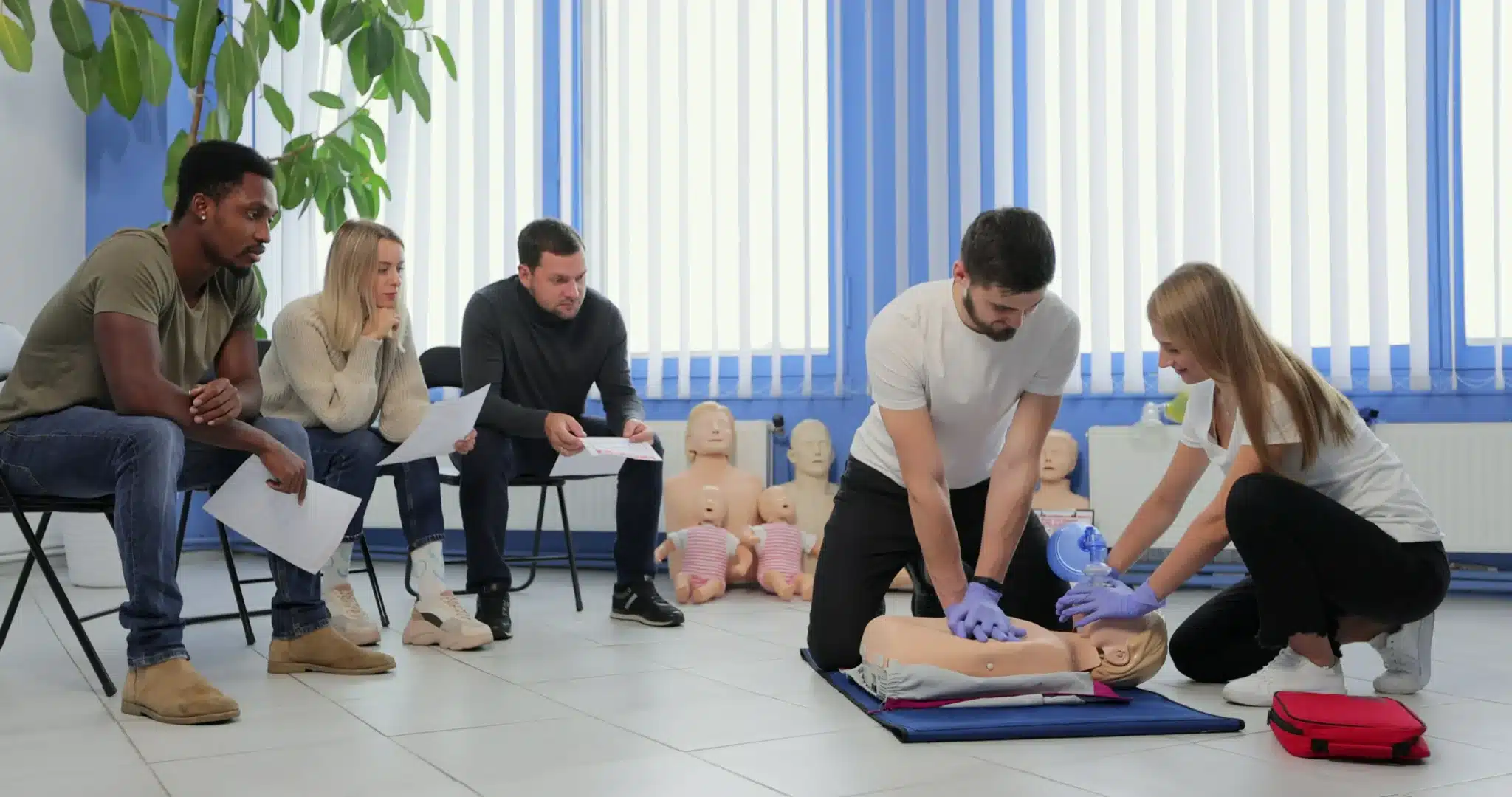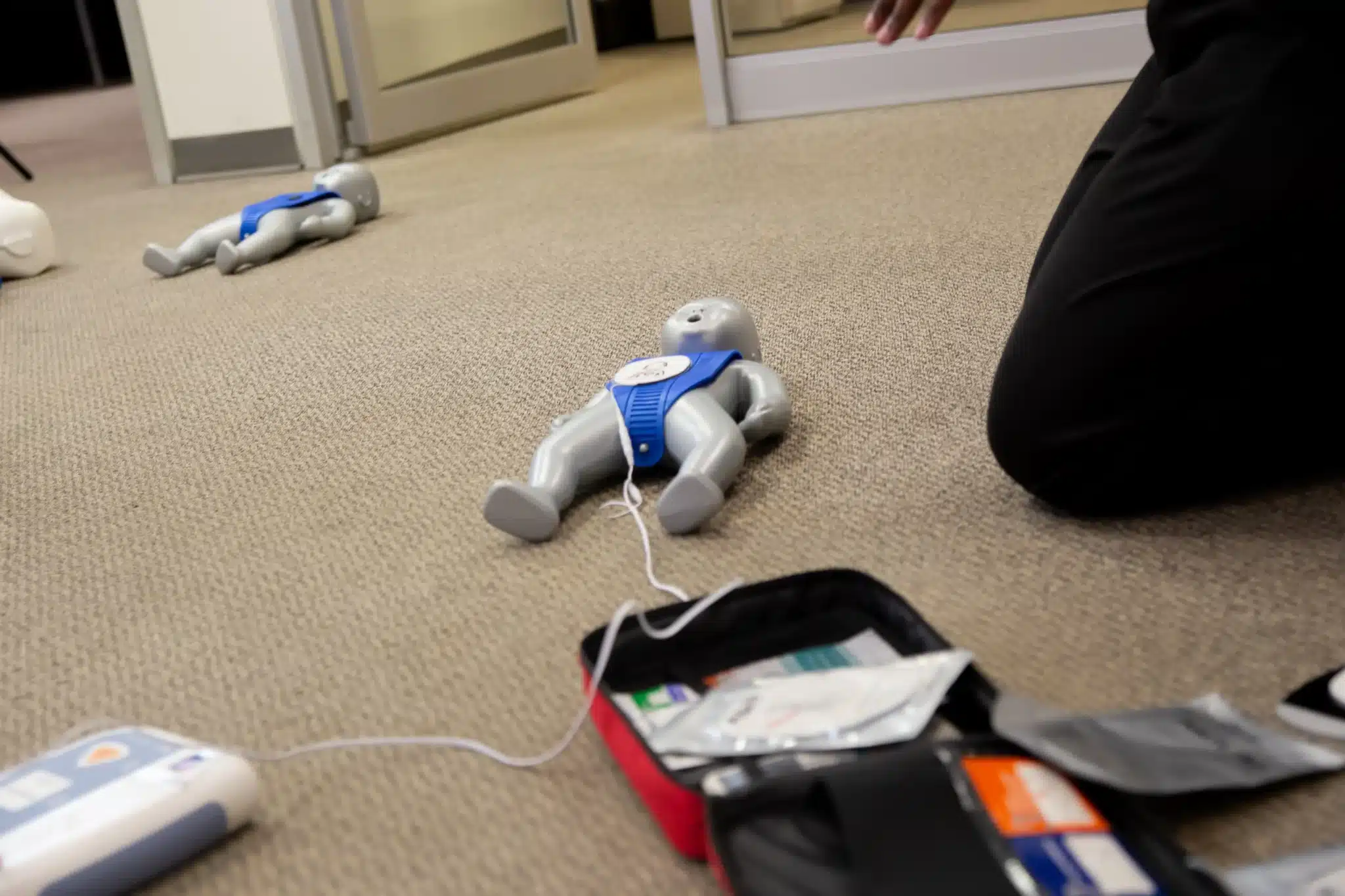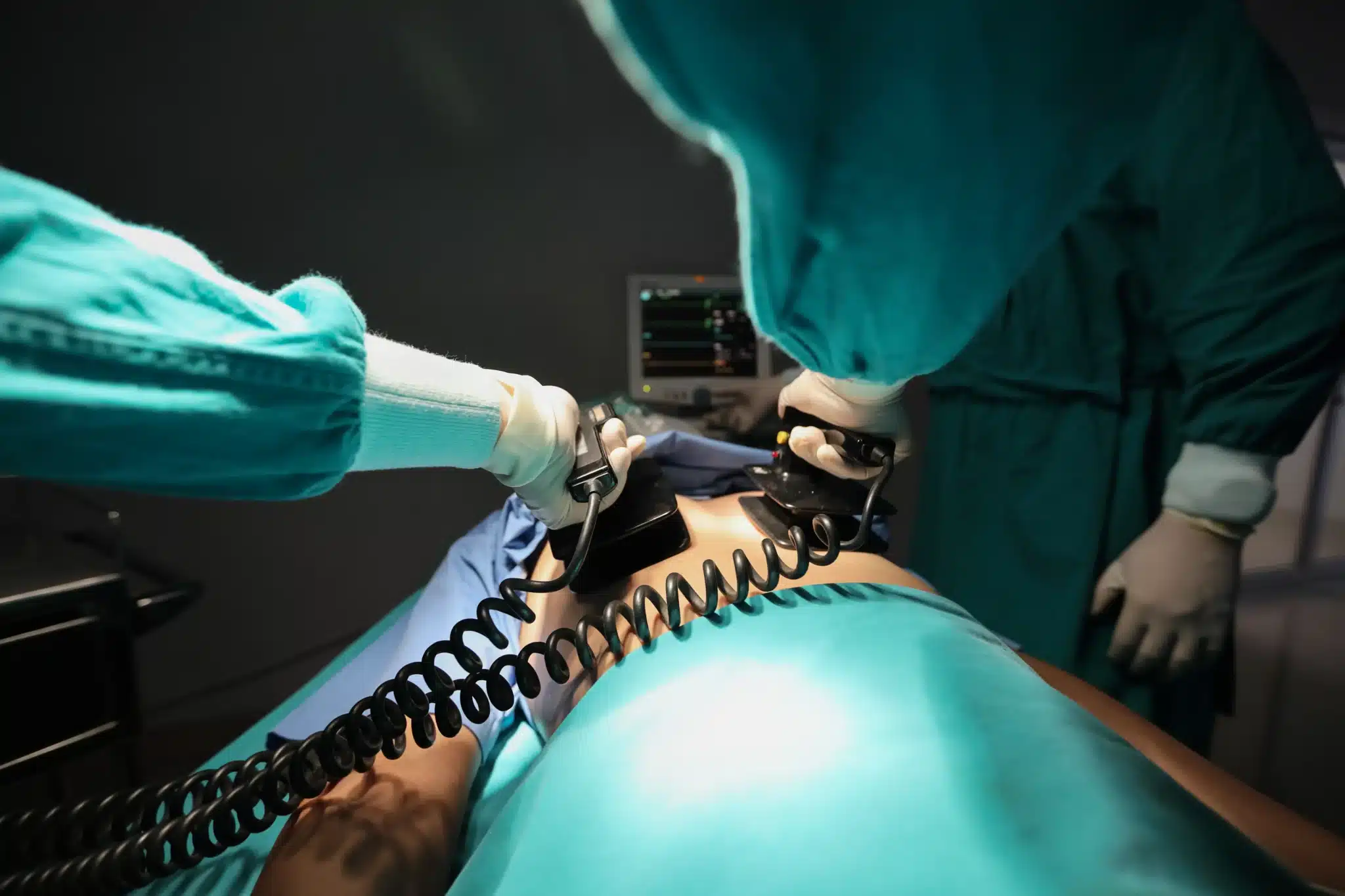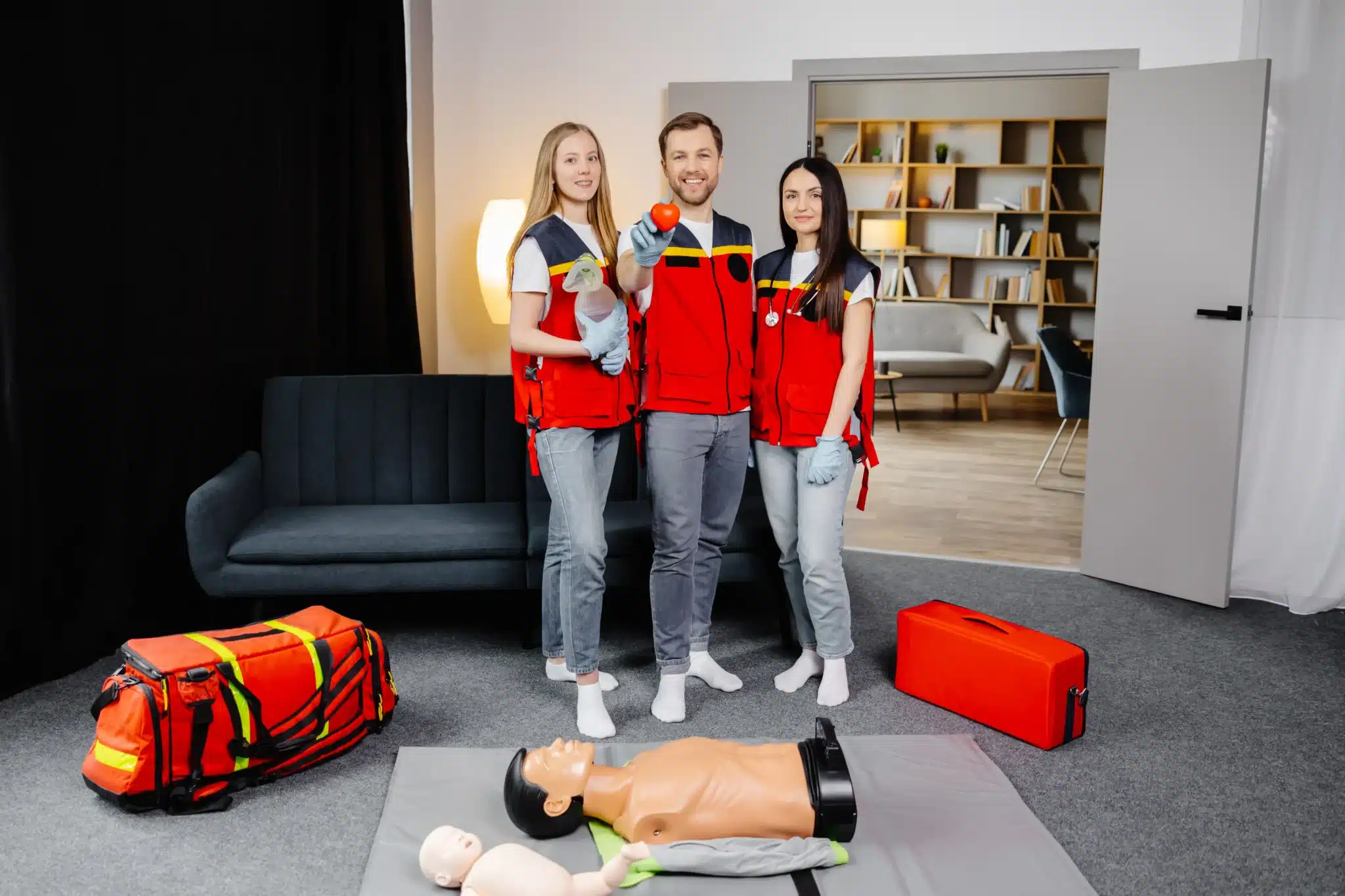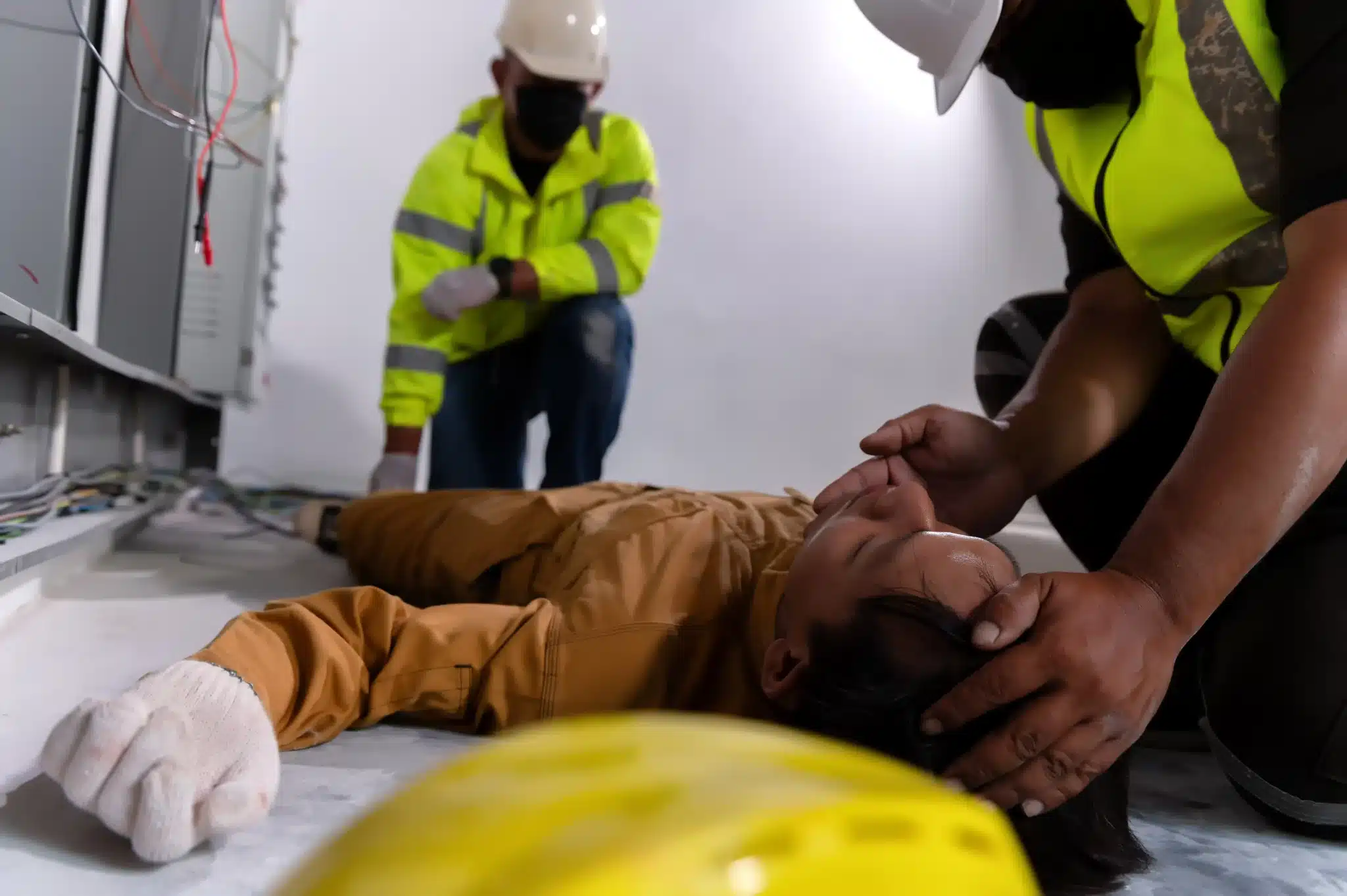Scraped knees, burns from the stove, or a sudden allergic reaction—life throws unexpected health curveballs our way. Knowing how to respond effectively in these situations can make all the difference. That’s where first-aid training comes in. It empowers you with the skills and confidence to handle medical emergencies, big or small. Whether you’re a parent, a teacher, a caregiver, or simply someone who wants to be prepared, first-aid training is a valuable asset. This guide explores the ins and outs of first-aid training in San Jose, covering everything from basic first aid and CPR to specialized courses and what to expect in your training. We’ll also look at top providers in the area, including Fremont CPR Classes, and help you choose the right course for your needs.
Key Takeaways
- First aid skills are essential for everyone: Learning to manage injuries and medical emergencies can empower you to act quickly and confidently in a crisis. Find a course that suits your lifestyle and individual needs.
- San Jose offers a variety of first-aid training programs: Explore different providers, course types, and formats to find the perfect fit. Prioritize hands-on practice and certified instructors for a comprehensive learning experience.
- First-aid certification is a valuable investment: It provides essential skills and builds confidence, enabling you to respond effectively in emergencies. Look for group discounts and convenient locations to make the most of your training.
What is First-Aid Training?
First-aid training gives you the skills to handle medical emergencies. It covers a range of situations, from assessing an accident scene to dealing with common injuries like cuts and burns. You’ll learn how to recognize and respond to serious medical events, such as heart attacks or strokes. These courses teach practical skills you can use in real-life emergencies. For example, you’ll learn how to control bleeding, treat burns, and care for sprains. First-aid training is valuable for everyone—from healthcare professionals and childcare providers to teachers, parents, and anyone who wants to be prepared for the unexpected. It not only teaches you the technical skills to respond effectively but also builds your confidence to act quickly and decisively in a crisis. If you’re in the Fremont, Newark, or San Jose area, check out the first-aid courses offered by Fremont CPR Classes. They offer a variety of courses, including CPR and ACLS training, to meet your specific needs. For cost-effective options, they also offer group discounts.
Top First-Aid Training Providers in San Jose
Finding the right first-aid training can feel overwhelming, so we’ve compiled a list of reputable providers in San Jose. Whether you’re a healthcare professional, a childcare provider, or simply someone who wants to be prepared for emergencies, there’s a course out there for you.
Fremont CPR Classes
Fremont CPR Classes offers high-quality, American Heart Association-certified courses in BLS, ACLS, PALS, CPR, and First Aid. They are a woman-owned business and serve Fremont, Newark, and San Jose. Their focus on comprehensive safety education and excellent customer service makes them a solid choice. They also offer CPR class discounts for groups.
American Red Cross
The American Red Cross is a well-known provider of first-aid and CPR training in San Jose. They offer a variety of courses, including pediatric first aid and CPR, suitable for parents, caregivers, and childcare providers. The Red Cross provides both in-person classes and blended learning options, combining online coursework with in-person skills sessions.
Safety Training Seminars
Safety Training Seminars provides a range of American Heart Association (AHA) certified courses, including BLS, ACLS, PALS, and First Aid. They also offer convenient renewal options like the RQI program, helpful for healthcare professionals maintaining their certifications.
First Support CPR and First Aid Training
First Support CPR and First Aid Training focuses on practical skills in First Aid, CPR/AED, and other related areas. Their training programs emphasize building confidence in performing life-saving techniques.
Local hospitals and medical centers
Many local hospitals and medical centers in San Jose also offer first-aid training courses. Check with hospitals in your area or nearby cities, like Stanford Health Care in Palo Alto or Valley Medical Center in San Jose, for information on their course offerings and schedules. These courses are often a convenient option for those working in healthcare or living nearby.
Types of First-Aid Courses
Choosing the right first-aid course depends on your individual needs and goals. Whether you’re a parent, a healthcare provider, or simply want to be prepared for emergencies, there’s a course out there for you. Here’s a breakdown of the most common types of first-aid training available in San Jose:
Basic First Aid
Basic first-aid courses cover essential life-saving techniques for responding to common injuries and illnesses. You’ll learn how to manage bleeding, burns, fractures, choking, and other medical emergencies. These in-person first aid classes provide personalized attention and hands-on training, giving you the confidence to act quickly and effectively during a crisis. Basic first aid certification is a valuable asset for anyone.
CPR and AED Training
CPR (cardiopulmonary resuscitation) is a critical skill that can help save lives during cardiac arrest. CPR courses teach you how to perform chest compressions and rescue breaths, restoring blood flow and oxygen to the brain. Many CPR courses also include training on how to use an AED (automated external defibrillator), a portable device that can deliver an electric shock to the heart to restore a normal rhythm. CPR and AED training is often combined with basic first aid, offering comprehensive emergency preparedness. You can find these courses available in person or through blended learning options that combine online coursework with in-person skills demonstrations. Fremont CPR Classes offers a variety of CPR and first-aid courses.
Advanced Life Support Courses (ACLS, PALS)
Advanced life support courses are designed for healthcare professionals who need more specialized training in managing life-threatening medical emergencies. ACLS (Advanced Cardiovascular Life Support) focuses on treating adult patients experiencing cardiac arrest, stroke, and other cardiovascular emergencies. PALS (Pediatric Advanced Life Support) covers managing critically ill or injured infants and children. These advanced courses typically involve extensive simulations and hands-on practice, ensuring healthcare providers are well-equipped to handle complex medical situations. Renewal courses are also available for maintaining current certifications.
Specialized Training (Pediatric, Workplace, etc.)
Beyond basic and advanced life support, various specialized first-aid courses cater to specific needs and environments. Pediatric first aid focuses on the unique needs of infants and children, teaching caregivers how to respond to common childhood injuries and illnesses. Workplace first-aid courses address occupational hazards and provide training on specific safety procedures. Other specialized courses may focus on wilderness first aid, pet first aid, or other niche areas. These specialized courses offer tailored training to ensure you’re prepared for the specific challenges you might face.
What to Expect in Your First-Aid Course
So, you’ve decided to learn first aid—great choice! Knowing what to expect can help you feel prepared and confident. This section covers the basics, from course format to how you’ll earn your certification.
Course Duration and Format
First-aid courses in San Jose are designed to fit your schedule. You’ll find options ranging from compact, in-person classes that take just a few hours to blended learning courses that combine online modules with hands-on practice. Fremont CPR Classes offers a variety of course formats, so you can choose what works best for you. Providers like the American Red Cross also offer various course formats and schedules.
Skills and Techniques You’ll Learn
First-aid courses cover essential life-saving skills applicable to various emergencies. You’ll learn how to respond to common injuries like cuts, burns, and sprains. The curriculum typically includes adult and child first aid, ensuring you can assist people of all ages. You’ll also gain valuable knowledge in recognizing and responding to medical emergencies, such as allergic reactions, heart attacks, and strokes.
Hands-on Practice
Hands-on training is a cornerstone of effective first-aid education. In-person classes provide opportunities to practice techniques under the guidance of certified instructors. This practical experience builds your muscle memory and confidence, preparing you to act quickly and efficiently in a real emergency. Fremont CPR Classes emphasizes this hands-on approach.
Assessment and Certification
Most first-aid courses conclude with an assessment to ensure you’ve grasped the key concepts and skills. This often involves demonstrating your proficiency in techniques like CPR and bandaging. Upon successful completion, you’ll receive your first-aid certification, typically valid for two years. Many providers issue certificates on the same day as the class. Remember to check with your chosen provider for specific certification details.
Prepare for Your First-Aid Training
Getting ready for your first-aid training doesn’t require extensive preparation, but a little planning can make your learning experience smoother. Here’s what you should know:
Required Materials and Supplies
Most first-aid courses provide the necessary training materials, including bandages, dressings, and resuscitation mannequins. When you register for a first-aid class with Fremont CPR Classes, we’ll let you know exactly what (if anything) you need to bring. Generally, having a pen and notepad handy for taking notes can be helpful.
Pre-course Study Tips
While pre-course studying isn’t mandatory for basic first-aid certification, familiarizing yourself with basic first-aid principles can give you a head start. The American Red Cross offers resources like articles and videos that introduce essential life-saving techniques. Brushing up on these concepts beforehand can help you get the most out of your in-person training. Remember, consistent practice after your course is key to retaining these vital skills.
What to Wear and Bring
Comfort is key during your first-aid training. Wear loose, comfortable clothing that allows for a full range of motion. You’ll be practicing hands-on skills, so avoid restrictive clothing. Comfortable shoes are also important, as you’ll be on your feet for portions of the class. A small notebook and pen can be useful for jotting down notes, and a water bottle will keep you hydrated. Our San Jose first-aid classes are conveniently located, so you’ll find everything you need nearby.
Cost and Value of First-Aid Certification
Knowing the cost and benefits of first-aid training helps you make informed decisions about your safety education. It’s an investment in your skills and ability to respond to emergencies.
Average Course Costs
First-aid certification course costs in San Jose vary based on the provider, the type of course, and the format. Providers like Safety Training Seminars emphasize competitive pricing for their courses. The American Red Cross also offers a variety of courses, with prices adjusted based on the specific class. Contacting a few different providers to compare pricing is always recommended. Don’t hesitate to ask about available discounts or promotions.
Group Discounts and Promotions
If you’re training with a group, ask about potential discounts. Many CPR training providers, including Fremont CPR Classes, offer reduced rates for group training sessions. Check with your chosen provider about their group discount options. This can be a cost-effective way to train a team or organization.
Benefits of Certification
The value of first-aid certification goes beyond the classroom. First-aid training gives you the skills to respond effectively during medical emergencies. It builds confidence to act quickly and provide assistance when it’s needed. While in-person San Jose first aid certification courses may only take a few hours, they offer essential skills and knowledge that can make a real difference in critical situations. Think of it as an investment in your preparedness and the well-being of those around you.
Choose the Right First-Aid Training Provider
Finding the right first-aid training provider is crucial for a valuable learning experience. Here’s what to consider:
Certifications and Accreditations
Look for providers affiliated with reputable organizations like the American Heart Association (AHA) or the American Red Cross. These organizations maintain high standards for training and certification. Fremont CPR Classes is a woman-owned AHA Training Center offering courses like BLS, ACLS, and PALS, ensuring your certification meets nationally recognized guidelines. The American Red Cross also provides CPR and first aid training in San Jose. Make sure the provider offers the specific certifications you need, whether it’s basic first aid, CPR/AED, or advanced life support.
Instructor Qualifications
Experienced instructors make all the difference. Ask about the instructors’ credentials and experience. They should ideally have real-world experience in healthcare or emergency response. Safety Training Seminars, for instance, highlights its instructors’ practical experience. This hands-on experience can enrich your learning and offer valuable insights.
Class Size and Learning Environment
Consider the class size and learning environment. Smaller classes often allow for more personalized attention and interaction with the instructor. Red Cross classes in San Jose are often structured for focused learning. Think about what learning environment best suits you—a smaller, more intimate setting or a larger group. Also, consider the location and accessibility of the training facility.
Reviews and Testimonials
Before choosing a provider, check reviews and testimonials from past participants. Yelp can be a great resource for finding reviews of first-aid training providers in San Jose. Reading about other people’s experiences can offer valuable insights into the quality of instruction, the learning environment, and the overall value. Safety Training Seminars actively gathers feedback to improve its programs, showing a commitment to student satisfaction.
Related Articles
- Workplace CPR and First-Aid Training Benefits
- CPR Certification in San Jose: A Complete Guide
- Pediatric CPR & First-Aid Training in Fremont – Fremont CPR Classes
- Online ACLS Classes in San Jose: Your Guide – Fremont CPR Classes
- ACLS Courses in Newark: Your Complete Guide – Fremont CPR Classes
Frequently Asked Questions
What’s the difference between CPR and First Aid? CPR focuses specifically on life-threatening situations where someone’s breathing or heartbeat has stopped. First Aid covers a broader range of injuries and illnesses, from minor cuts and burns to more serious situations like choking or allergic reactions. Both are valuable skills, and many courses combine the two.
How long does a First Aid certification last? First Aid certifications are typically valid for two years. Check with your specific training provider for their renewal policy. Many offer refresher courses as your certification expiration date approaches.
Do I need any prior medical experience to take a First Aid course? Absolutely not! First Aid courses are designed for people of all backgrounds, regardless of prior medical experience. The courses start with the basics and build your skills step by step.
What if I’m nervous about the hands-on practice? It’s completely normal to feel a little apprehensive about the hands-on portions of the course. Instructors create a supportive learning environment, and they’ll guide you through each skill. The practice is designed to build your confidence, so by the end of the course, you’ll feel prepared to act in a real emergency.
How do I choose the right First Aid course for me? Think about your specific needs and interests. Are you a parent, a teacher, a healthcare professional, or simply someone who wants to be prepared for everyday emergencies? Once you have a general idea, research different providers in your area and compare their course offerings, schedules, and costs. Don’t hesitate to contact providers directly and ask questions. They can help you find the perfect course to fit your goals.
